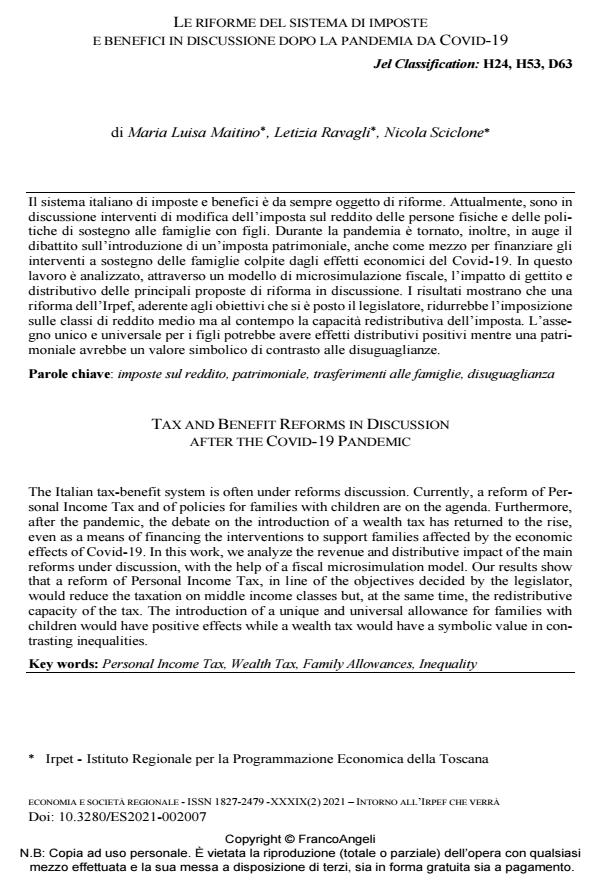Tax and benefit reforms in discussion after the covid-19 pandemic
Journal title ECONOMIA E SOCIETÀ REGIONALE
Author/s Maria Luisa Maitino, Letizia Ravagli, Nicola Sciclone
Publishing Year 2021 Issue 2021/2
Language Italian Pages 22 P. 95-116 File size 479 KB
DOI 10.3280/ES2021-002007
DOI is like a bar code for intellectual property: to have more infomation
click here
Below, you can see the article first page
If you want to buy this article in PDF format, you can do it, following the instructions to buy download credits

FrancoAngeli is member of Publishers International Linking Association, Inc (PILA), a not-for-profit association which run the CrossRef service enabling links to and from online scholarly content.
The Italian tax-benefit system is often under reforms discussion. Currently, a reform of Personal Income Tax and of policies for families with children are on the agenda. Furthermore, after the pandemic, the debate on the introduction of a wealth tax has returned to the rise, even as a means of financing the interventions to support families affected by the economic effects of Covid-19. In this work, we analyze the revenue and distributive impact of the main reforms under discussion, with the help of a fiscal microsimulation model. Our results show that a reform of Personal Income Tax, in line of the objectives decided by the legislator, would reduce the taxation on middle income classes but, at the same time, the redistributive capacity of the tax. The introduction of a unique and universal allowance for families with children would have positive effects while a wealth tax would have a symbolic value in contrasting inequalities.
Keywords: Personal Income Tax, Wealth Tax, Family Allowances, Inequality
Jel codes: H24, H53, D63
Maria Luisa Maitino, Letizia Ravagli, Nicola Sciclone, Le riforme del sistema di imposte e benefici in discussione dopo la pandemia da covid-19 in "ECONOMIA E SOCIETÀ REGIONALE " 2/2021, pp 95-116, DOI: 10.3280/ES2021-002007